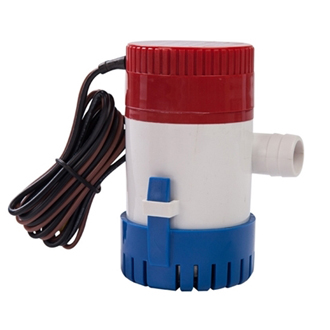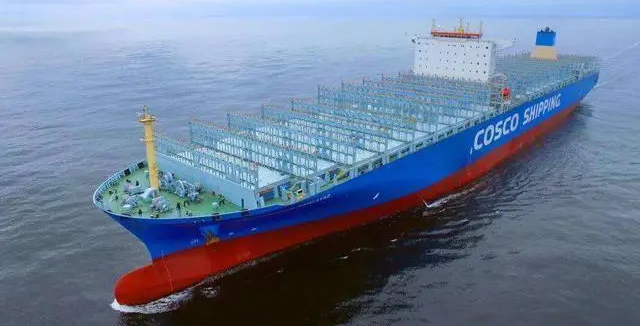What is a Bilge Pump?
When it comes to boating, whether for leisure or professional purposes, safety is paramount. One crucial piece of equipment that plays a vital role in maintaining the safety of a vessel is the bilge pump. But what exactly is a bilge pump, and why is it so important for boats? In this blog post, we'll explore the function, types, and maintenance of bilge pumps, helping you understand their critical role in boating safety. Discover more about bilge pumps at ATO.com.
Bilge Pump Basics
A bilge pump is a device used to remove bilge water from the lowest part of the hull of a ship or boat, where various types of water tend to accumulate. This water can come from waves, rain, leaks, or condensation from the engine and air conditioning systems. If left unchecked, the bilge water can increase in volume and lead to stability issues, or worse, cause the vessel to sink. Thus, the bilge pump is essentially a lifeguard for watercraft, continuously working to keep the ship afloat by preventing water accumulation.

Types of Bilge Pumps
Bilge pumps come in various designs, each suitable for different types of vessels and water conditions:
Manual Bilge Pumps: These are operated by hand and are essential in smaller boats or as a backup system in larger vessels. They require physical labor to operate, which can be exhausting but crucial during emergencies when power is unavailable.
Electric Bilge Pumps: The most common type found in modern boats, electric bilge pumps automatically remove water when it reaches a certain level, thanks to integrated float switches. They are efficient but rely on the boat’s battery and electrical system to function.
Engine-Driven Bilge Pumps: These are typically used on larger vessels and are powered by the boat's engine. They are very powerful and capable of pumping out significant amounts of water quickly.
Advantages and Disadvantages
From the working principle, we can know that the miniature submersible pump still belongs to the impeller pump from the internal structure.
Advantages
- Can pump liquids containing particles, oil: the impeller pump internal impeller clearance is large, and even allows the passage of smaller solid particles, so it can pump liquids containing smaller particles, such as the nutrient solution used to add bait in fish ponds, and so on;
- Stable output flow: the internal impeller is centrosymmetric, unlike diaphragm pumps or piston pumps with eccentric wheel drive, the "pulsation" phenomenon is almost non-existent.
- No need to add water: because it itself is fully or partially submerged in water, without adding water every time manually, so overcoming the impeller pump has no self-priming ability of the drawbacks; to solve the piston pump, diaphragm pumps can not pump particles of the shortcomings of the pump.
- Extra large flow rate, ultra small volume: using high-grade ball bearings, high-speed permanent magnet motor, speed, reliability far beyond the general civilian submersible pump motor, can do the flow rate of ordinary submersible pumps several times ~ 10 times; but the volume is not much change;
- Extremely low noise: because there is water to absorb the noise, so the noise is much lower than the noise of piston water pump or diaphragm water pump.
- High-grade workmanship, corrosion-resistant seawater: the use of high-grade ABS shell ultrasonic molding, the pump shaft is made of stainless steel, durable wear-resistant, non-corrosive, freshwater, seawater can be used!
Disadvantages and solutions
- The main disadvantage is that the output pressure is not high (head is not high). Can only be used for large flow and low head occasions.
- can not run out of water, otherwise it is easy to cause the seal because of high temperature is destroyed, water into the motor failure. But can be equipped with "float switch" to automatically adjust the position of the water level, so as to avoid dry rotation, idle. Realize unmanned monitoring.

Applications of Bilge Pumps Across Industries
- Maritime and Shipping Industry: In the maritime sector, bilge pumps are fundamental for managing the water that accumulates in the bilge of ships and boats. They ensure the vessel's stability by preventing water from accumulating, which can cause the ship to list or even capsize. Large cargo ships, oil tankers, and passenger ferries rely heavily on robust bilge pumping systems to handle significant amounts of bilge water, often contaminated with oil and other substances, necessitating careful processing to meet environmental standards before disposal.
- Fishing Industry: For the fishing industry, bilge pumps are not just a safety requirement but a necessity for operational integrity. Fishing vessels operate in some of the most challenging marine environments where high seas and bad weather can lead to significant water ingress. Bilge pumps help in quickly removing this water, ensuring the vessel remains stable and afloat. Additionally, bilge pumps are used to manage the melting ice in the holds used to store catch, preventing it from mixing with bilge water.
- Recreational Boating: Owners of yachts and recreational boats use bilge pumps to manage both safety and comfort. These boats often feature smaller, electric bilge pumps designed to automatically remove water ingress from waves, rain, or accidental leaks. Regular maintenance of these pumps is essential for leisure boaters to enjoy a safe outing without the risk of unexpected flooding.
- Construction and Mining: In construction and mining operations, bilge pumps are critical for dewatering purposes. Construction sites, particularly those below ground level, frequently encounter issues with water accumulation. Similarly, in mining, water ingress in shafts and tunnels can pose significant hazards. Portable bilge pumps are often used in these industries to manage and remove water, ensuring safe working conditions and preventing equipment damage.
- Emergency Services: Emergency service vessels, such as lifeboats and rescue craft, must be equipped with highly reliable bilge pumps. These boats are often exposed to extreme conditions during rescue operations, making effective bilge pumps critical for their operation. Additionally, in flood rescue scenarios on land, bilge pumps can be used to manage water levels, providing crucial aid in emergency flood response efforts.
- Industrial Facilities: Many industrial facilities, especially those involved in manufacturing processes that use large volumes of water, incorporate bilge pumps into their water management systems. These pumps help in handling accidental water spills or in processes where water pooling could pose risks to equipment or safety standards.
- Agricultural Applications: In agricultural settings, particularly in areas prone to heavy rains or flooding, bilge pumps can be used to protect crops and livestock. They are employed to clear excess water from fields and animal enclosures, thus preventing crop damage and reducing the risk of disease in livestock from stagnant water.

